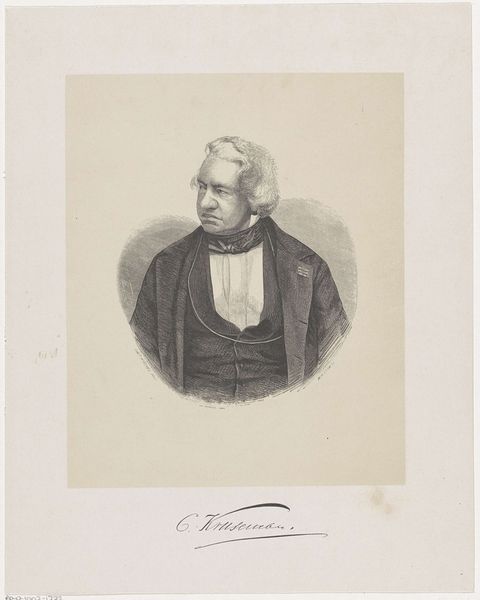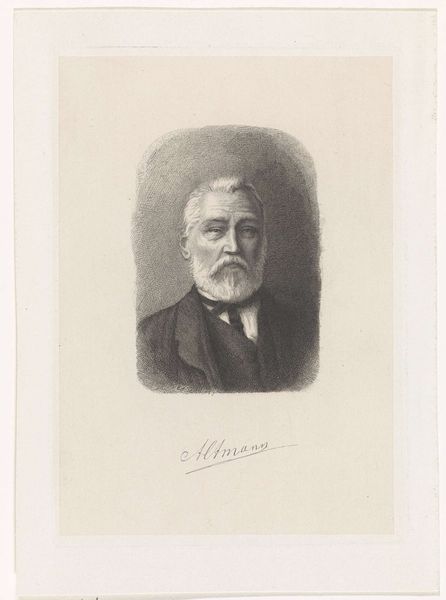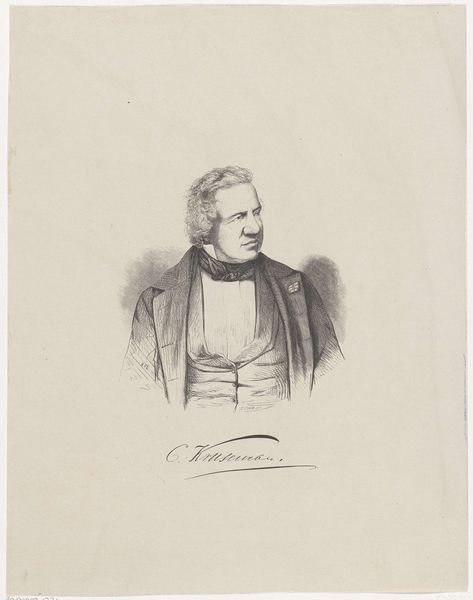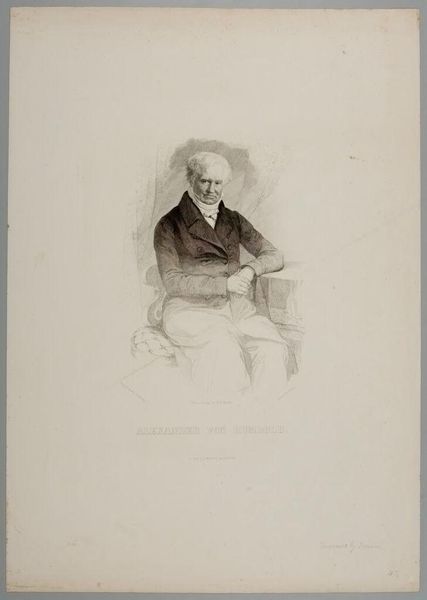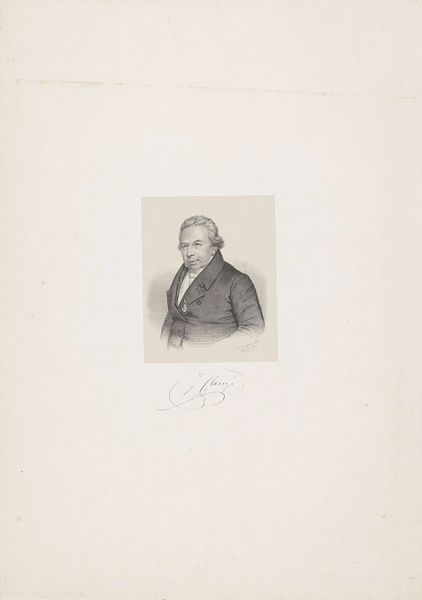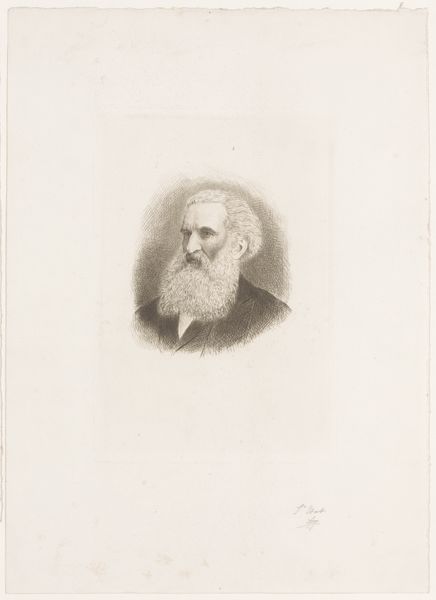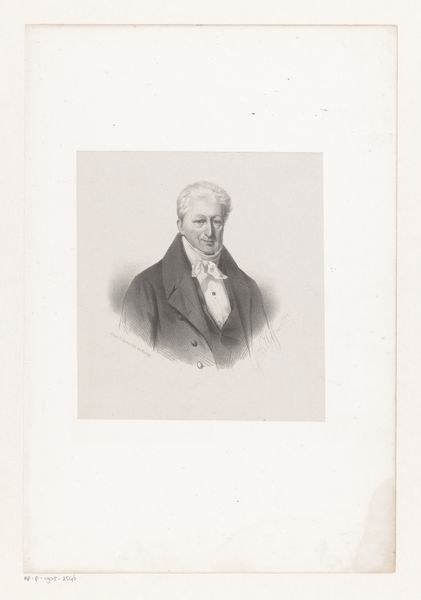
print, graphite, engraving
#
portrait
#
light pencil work
# print
#
charcoal drawing
#
portrait reference
#
pencil drawing
#
graphite
#
portrait drawing
#
engraving
#
realism
Dimensions: height 365 mm, width 280 mm
Copyright: Rijks Museum: Open Domain
Adrianus Johannes Ehnle created this portrait of Georgius Jacobus Johannes van Os using lithography, a method that democratized image production in the 19th century. Consider the social status imbued in this image. Van Os, depicted with a composed demeanor and adorned with what seems to be an order of merit, is clearly a man of standing. Ehnle, who lived in an era defined by strict social hierarchies, uses the portrait to not only capture Van Os’s likeness but also to affirm his position within the societal structure. Lithography at the time was becoming increasingly popular for portraiture, allowing the middle class to participate in the tradition of memorializing oneself. Does this portrait reinforce traditional representations of power and status, or does the medium—lithography—offer a subversive commentary on these conventions? How does access to representation change the narrative around identity? The quiet dignity of the portrait encourages us to reflect on how we perceive and portray status.
Comments
No comments
Be the first to comment and join the conversation on the ultimate creative platform.
